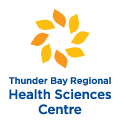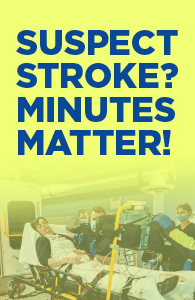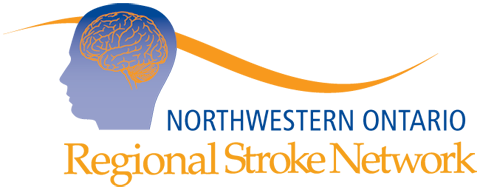What is Post Stroke Fatigue?

Tiredness or fatigue is very common after stroke. The sensation of tiredness can feel overwhelming. Many people experience a profound sense of fatigue after a stroke, up to 1 – 2 years later and sometimes longer. This is referred to as post – stroke fatigue (PSF). This condition after stroke is often under recognized and can have overlap with depression, anxiety and poor exercise tolerance. Mechanisms of PSF is not well understood and research is just starting to better manage this condition.
Estimates of frequency vary, depending on timing, during the post stroke recovery period as well as how post stroke fatigue was defined and the characteristics studied. One systemic review found that the frequency of post stroke fatigue to be occurring for stroke survivors to be between 23-75% [Choi-Kwon S and Kim JS.2011]. Younger age stroke survivors particularly seem to have profound PSF (Parks et al. 2012).
In one study, the percentages of stroke participants who experienced fatigue following minor stroke or TIA were 23% (assessed at 4–26 weeks), 31–53% (26 weeks), and 34% (52 weeks) [Moran et al. 2014]. In a another study that assessed PSF following minor stroke at two assessment points, the prevalence of fatigue was 35% at two-months poststroke and 33% at 18 months [Snaphaan et al. 2011].
Several predictors seem to influence post stroke fatigue. These have been identified as depression, low levels of physical functioning, and prestroke fatigue [Lerdal et al. 2011, Cheng Y etal 2015]. In addition stroke location in the brain may influence the severity of fatigue. People with subcortical strokes such as thalamic strokes appear to have a more profound PSF [Staub & Bagousslavsky, 2001, Wei etal. 2016].
Normal fatigue is a feeling of general tiredness that is of short duration that can be resolved with rest. However PSF is described as an overwhelming feeling of lack of energy and exhaustion for everyday tasks. Survivors describe it as episodic throughout the day and that seems to be exacerbated with excess stimulation. PSF is often described as an abnormal need for naps and rest compared to prestroke and more easily tired by activities (Canadian Stroke Best Practices 2015)
PSF can exacerbate (make temporarily worse) deficits of stroke such as weakness, memory , speech and concentration. Often stroke survivors become fearful that they are developing another stroke as their deficits of their stroke are temporarily more pronounced. Stroke survivors need to be assured that PSF is a symptom of competing energy in the brain post stroke, as their brain is recovering. It is not a sign that their stroke is advancing.
There is insufficient evidence to recommend specific pharmacological or non pharmacological treatments for post stroke fatigue. However current management focuses on education and energy conservation. Pacing is a priority. Planned rest periods throughout the day and being flexible with rest and planning activities in stages have been found to be helpful. It is also found that gentle, regular exercise increases energy levels (Puchta, A 2008, Canadian Stroke Best Practice Recommendations 2015). Stroke survivors who experience PSF should be screened for common and treatable poststroke co-morbidities and for medications that are associated with and/or exacerbate fatigue.
The Canadian Stroke Best Practice Guidelines provides updated information for health care providers regarding PSF. Click here.
The American Heart Association has an interesting publication for people living with PSF that can be found on their website. Click here.
Author: Sharon Jaspers NP, TBRHSC Stroke Prevention Clinic
References:
Canadian Stroke Best Practice Recommendations 2015, Online:www.strokebestpractices.ca or http://onlinelibrary.wiley.com/doi/10.1111/ijs.12557/full
Choi-Kwon S and Kim JS. Poststroke fatigue: an emerging, critical issue in stroke medicine. International Journal of Stroke 2011; Aug. 328-336.
Cheng Y et al. Poststroke fatigue: risk factors and its effect on functional status and health-related quality of life. International Journal of Stroke 2015;10:506-512.
Lerdal A, Bakken LN, Rasmussen EF. Physical impairment, depressive symptoms and pre-stroke fatigue are related to fatigue in the acute phase after stroke. Disabil Rehabil 2011; 33:334–342.
Moran GM, Fletcher B, Feltham MG, Calvert M, Sackley C, Marshall T. Fatigue, psychological and cognitive impairment following transient ischaemic attack and minor stroke: a systematic review. Eur J Neurol 2014; 21:1258–1267.
Puchta,A . Why am I so tired after a stroke” Journal of Vascular Interv neurology 2008 1(2) 63-64.
Snaphaan L, van der Werf S, de Leeuw FE. Time course and risk factors of post-stroke fatigue: a prospective cohort study. Eur J Neurol 2011; 18:611–617.
Staub f, and Bogousslavsky, L. Fatigue after stroke: a major but neglected issue. Cerebrovascular Disease 2001; Aug 75-81
Wei,C et al. Factors associated with post-stroke depression and fatigue: lesion location and coping styles. Journal of Neurology 2016;263: 269-276.






